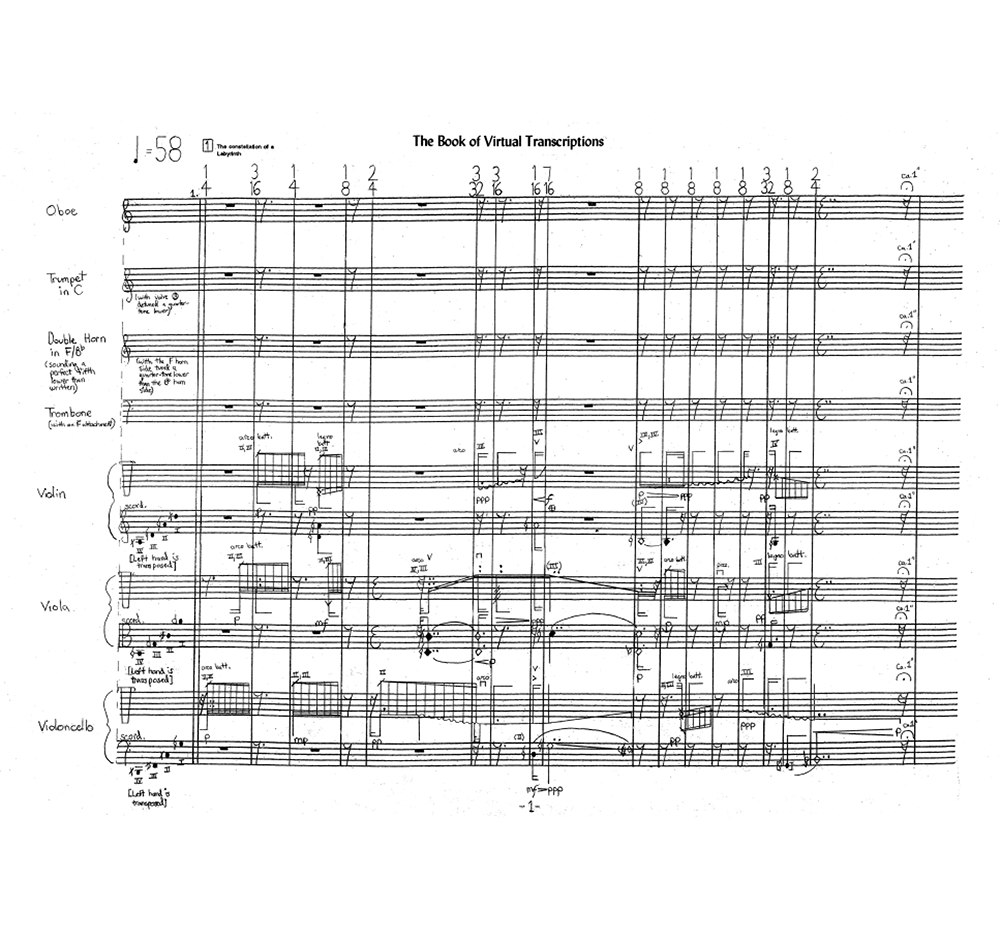Title: The Book of Virtual Transcriptions
Instrumentation: Oboe, trumpet, horn, trombone, violin, viola, violoncello
Year: 2004—05
Duration: approx. 14 min.
Premiere: Fromm Music Foundation 2014
Performers: Dal Niente
Tsao’s most deconstructivist work, no less inspired by the 7 x 7 lines of text of architect Daniel Libeskind’s Virtual House as applied to the adagio of Mozart’s oboe quartet (K.V. 370), is an exemplary work where unusual conceptual models beget novelty of form and an incongruity of acoustic properties (as well as their associated meanings) from traditional instruments, the latter often resulting in resemblances to other instruments that are not present. The brittle logic of the 49 architectural conundrums transcribed into a series of sounding structures offers a way out of the conventional narrative, deconstructing and reconstructing contexts that then resist assimilation into readily understood continuities. If there is any consistency, it is one of perpetual strangeness and alienation. The incessant ties and occasional fermata, that which in music might spell cadence and resolution, only prolong the sensation of incongruity and enigma, and by the end, even the most banal of scalar material acquires a sudden and surprising quality of out-of-place unfamiliarity in music. With a deconstructivist architecture, the wall, the window, the staircase, the hall cannot be taken at face value: similarly, the instrument, the caesura, the continuity, the solo in relation to the ensemble are to be perceived askew, as if standing on a conceptual incline or slanting foundation that does not permit normal viewing. But this is most significant in relationship to the form and time of the piece which leaves one in a perpetually aroused state of perplexity—the riddle of “what is it?” What is significant here is that the latter question has a sustained and inquisitive tension, dimensionality and logic in retrospect: that which constitutes the rightness of the fragmented wholeness itself.
Steven Takasugi
Link: www.wisemusicclassical.com/work/64747/The-Book-of-Virtual-Transcriptions–Ming-Tsao/


